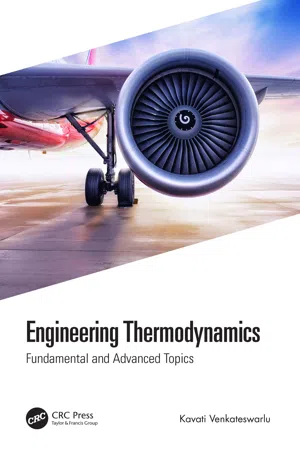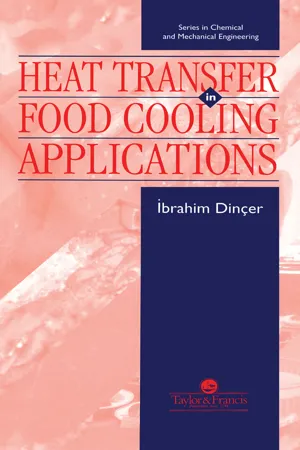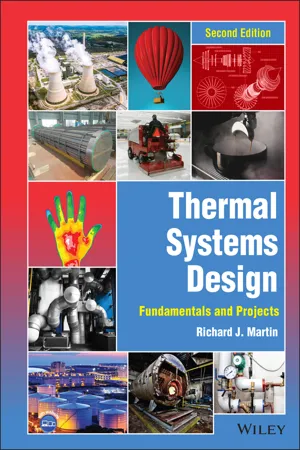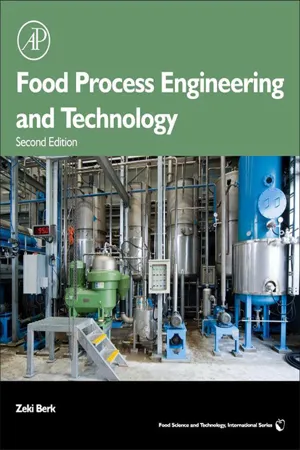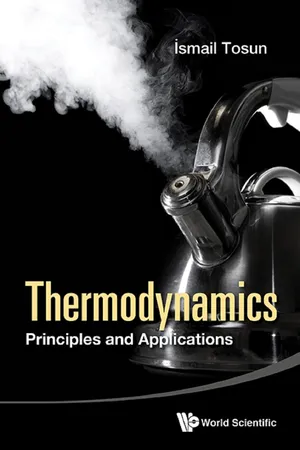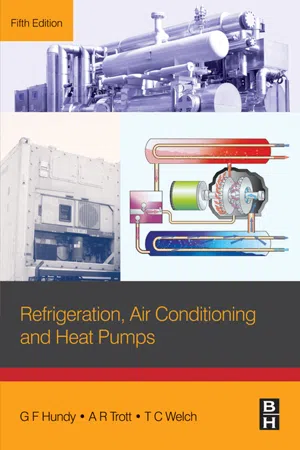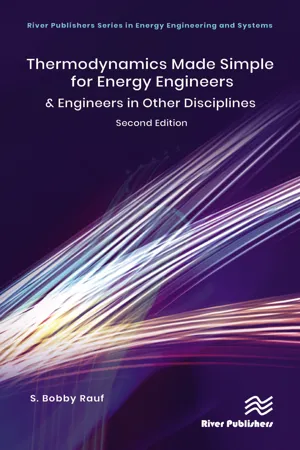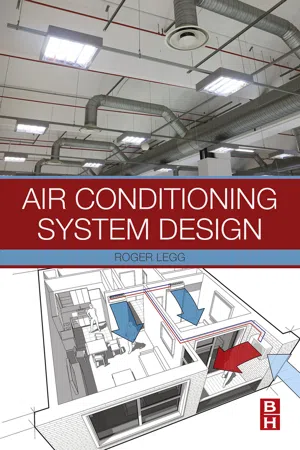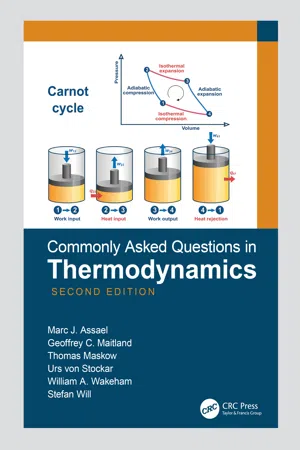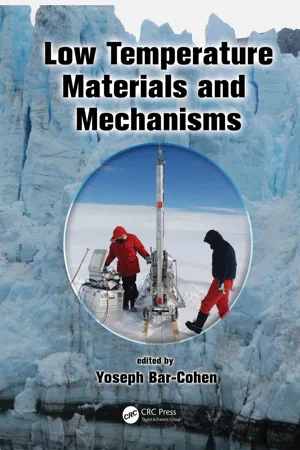Technology & Engineering
Refrigeration Cycle
The refrigeration cycle is a process used in refrigerators, air conditioners, and heat pumps to transfer heat from one location to another. It involves the compression, condensation, expansion, and evaporation of a refrigerant to absorb heat from a low-temperature area and release it in a high-temperature area. This cycle allows for the cooling of spaces and the preservation of perishable items.
Written by Perlego with AI-assistance
Related key terms
12 Key excerpts on "Refrigeration Cycle"
- eBook - ePub
Engineering Thermodynamics
Fundamental and Advanced Topics
- Kavati Venkateswarlu(Author)
- 2020(Publication Date)
- CRC Press(Publisher)
As shown in Figure 12.3, a system undergoes a cycle while exchanging heat with two thermal reservoirs at different temperatures. The energy transfers labeled on the figure are in the directions indicated by the arrows. Based on the energy conservation principle, the cycle discharges heat in the amount of Q 1 by heat transfer to the hot reservoir, equal to the sum of the heat Q 2 received by heat transfer from the cold reservoir and the net work input. This cycle might be a Refrigeration Cycle or a heat pump cycle, depending on whether its function is to remove energy Q 2 from the cold reservoir or deliver energy Q 1 to the hot reservoir. FIGURE 12.3 The Refrigeration Cycle. Heat always flows in the direction of decreasing temperature, i.e., from a high-temperature body to a low-temperature one without requiring any devices. However, the reverse process, i.e., transfer of heat from a low-temperature medium to a high-temperature one, cannot occur spontaneously, and it requires special devices called refrigerators. Refrigerators are also cyclic devices like heat engines and use the refrigerant as working fluid in the Refrigeration Cycle. The most commonly used Refrigeration Cycle is the vapor compression Refrigeration Cycle. It comprises four main components: compressor, condenser, expansion valve, and evaporator. The amount of heat removed from the refrigerated space is Q 2 at temperature T 2, the amount of heat rejected to the warm environment is Q 1 at temperature T 1, and W net,in is the net work input to the refrigerator - eBook - ePub
- Ibrahim Dincer(Author)
- 2023(Publication Date)
- CRC Press(Publisher)
25 ]. Between 1880 and 1890 ammonia-compression installations became more common. By 1890 mechanical refrigeration had proved to be both practical and economical for the food refrigeration industry. Europeans provided most of the theoretical background for the development of mechanical refrigeration, but Americans participated vigorously in the widespread inventive activity between 1850 and 1880.Steady technical progress in the field of mechanical refrigeration marked the years after 1890. Revolutionary changes were not the rule, but many improvements were made, in several countries, in the design and construction of refrigerating units, as well as in their basic components, compressors, condensers, and evaporators.4.3.2Main Refrigeration Systems and CyclesThe main objective of a refrigeration system which performs the reverse effect of a heat engine is to remove the heat from a low-level temperature medium (heat source) and to transfer this heat to a higher level temperature medium (heat sink). Figure 4.1 shows a thermodynamic system acting as a refrigeration machine. The absolute temperature of the source is TL and the heat transferred from the source is the refrigeration effect (refrigeration load) QL . On the other side, the heat rejection to the sink at the temperatureis TH is QH . Both effects are accomplished by the work input W. For continuous operation, the first law of thermodynamics is applied to the system.Refrigeration is one of the most important thermal processes in various practical applications, ranging from space conditioning to food cooling. In these systems, the refrigerant is used to transfer the heat. Initially, the refrigerant absorbs heat because its temperature is lower than the heat source’s temperature and the temperature of the refrigerant is increased during the process to a temperature higher than the heat sink’s temperature. Therefore, the refrigerant delivers the heat.Figure 4.1A thermodynamic system acting as a refrigerator.4.3.3Vapor-Compression Refrigeration SystemsIn practical applications, vapor-compression refrigeration systems are the most commonly used refrigeration systems, and each system employs a compressor. A basic vapor-compression Refrigeration Cycle consists of four major steps: - eBook - ePub
Thermal Systems Design
Fundamentals and Projects
- Richard J. Martin(Author)
- 2022(Publication Date)
- Wiley(Publisher)
10 Refrigeration and Heat PumpsBroadly, the term heat pump carries a connotation of any process related to cooling or heating that utilizes a refrigerant fluid plus several mechanical components to move thermal energy uphill in the temperature terrain that is associated with a temperature altered (indoor) state versus an ambient temperature (outdoor) state.Unlike a fluid pump that is a single piece of equipment, most heat pump systems require at least four pieces of equipment working together to accomplish the overall goal, which is to utilize electrical energy (or shaft power) to extract heat from a colder space and deposit it into a warmer space.When the primary objective is to extract heat out of a cold (outdoor) environment and deposit it into a warmer, inhabited space, the system keeps the generic name of heat pump. When the objective is to cool or dehumidify a warm, inhabited space or a space for cold storage of food or other heat‐labile materials, the system is called an air conditioner or refrigerator. The sections that follow include information about Refrigeration Cycles, measures of energy efficiency, functionality of the various system components, and examples of refrigeration system failures. For an excellent treatise on industrial refrigeration systems, see Stoecker (1998 ).10.1 Vapor Refrigeration Cycle
The ideal vapor Refrigeration Cycle is nearly the converse of the ideal Rankine cycle. For comparison, the ideal Rankine cycle has two constant‐pressure, phase‐change processes and two constant‐entropy, mechanical‐shaft‐work pressure‐change processes. In contrast, the ideal vapor Refrigeration Cycle has two constant‐pressure, phase‐change processes and one constant‐entropy, mechanical‐shaft‐work pressure‐change process (and a second pressure‐change process that involves no shaft work, so the enthalpy remains the same). See Figure 10.1 for ap ‐ H - eBook - ePub
- Zeki Berk(Author)
- 2013(Publication Date)
- Academic Press(Publisher)
compressor .Step 2 – Condensation . The compressed vapor is cooled until completely condensed as a saturated liquid (Point 3). Ideally, cooling is assumed to take place at constant pressure. The heat removed from the condensed vapor is transferred to a cooling medium such as air or water. Physically, this step takes place in a heat exchanger serving as a condenser .Step 3 – Expansion . The pressure of the liquid is released through a throttling element (e.g., an expansion valve ) down to pressure P1 (Point 4). The throttling process is supposed to be isenthalpic, not involving any exchange of energy. Point 4 represents a mixture of saturated vapor (Point 1) and saturated liquid (Point 5).Step 4 – Evaporation . Heat is transferred to the liquid–vapor mixture until all the liquid is evaporated (back to Point 1). This is the step of the cycle where useful refrigeration is generated. Physically, this step occurs in a heat exchanger known as the evaporator or diffuser .Figure 20.2 Vapor compression Refrigeration Cycle.The fluid undergoing the cycle is called a refrigerant . Although, theoretically, the reverse Rankine cycle could be run with any fluid, only certain compounds and mixtures are suitable for use in practical refrigeration. The criteria for the selection of refrigerants will be discussed later.The refrigeration capacity , qe , of a mechanical Refrigeration Cycle is the rate at which heat is extracted from the surroundings at the step of evaporation. Energy balance for the evaporator gives:(20.1)where m=rate of circulation of the refrigerant, kg·s−1 , and h1 , h2 , etc.=specific enthalpy of the refrigerant at Points 1, 2, etc., J·kg−1 .In the SI system, refrigeration capacity is expressed in watts. An old engineering unit, called the “commercial ton of refrigeration”, is still in use. It is equal to the rate at which heat needs to be removed to produce 1 ton (2000 lb in the USA) of ice at 0°C in 24 hours from water at the same temperature. Its equivalent in SI units is 3517 watts. - eBook - ePub
Thermodynamics
Principles and Applications
- İsmail Tosun(Author)
- 2015(Publication Date)
- WSPC(Publisher)
Chapter 6Power and Refrigeration Cycles
Thermodynamic cycles are broadly classified as power and Refrigeration Cycles. A power cycle (or heat engine) generates work using an energy source at a high temperature while a Refrigeration Cycle (or heat pump) provides cooling from a work input.Power cycles are divided into two categories: vapor power cycles in which the working fluid is alternately vaporized and condensed, and gas power cycles in which the working fluid remains in the gas phase throughout the entire cycle.Like power cycles, Refrigeration Cycles can be divided into two categories depending on the type of working fluid, known as the refrigerant : vaporcompression Refrigeration Cycles in which the refrigerant is alternately vaporized and condensed, and gas compression Refrigeration Cycles in which the refrigerant remains in the gas phase throughout the entire cycle.The purpose of this chapter is to provide the basic principles for the analysis of power and Refrigeration Cycles. 6.1Vapor Power CyclesIn vapor power cycles, the selection of a working fluid is dependent on various factors, such as physical properties, availability and cost, stability, safety and compatibility, and effect on the environment. Steam, by far, is the most commonly used working fluid. For low temperature heat sources, such as geothermal and solar, low boiling organic fluids are preferred1A typical vapor power cycle is the steam power plant shown in Fig. 6.1. Today, much of the electricity used in the world is produced in steam power plants consisting of four major components: boiler (or steam generator), turbine, condenser, and pump.Fig. 6.1 A typical steam power plant.In the boiler, different energy resources, such as fossil fuels (coal2 - eBook - ePub
- Irving Granet, Jorge Alvarado, Maurice Bluestein(Authors)
- 2020(Publication Date)
- CRC Press(Publisher)
The different refrigeration systems have been introduced in this chapter. Where the objective is to keep an area cool, we should use a refrigeration system, and a heat pump to keep an area warm. For each of these desired effects, we were able to define a figure of merit called the coefficient of performance. The cycles studied were the Carnot, Rankine, Brayton, absorption, and vacuum refrigeration. In addition to studying the cycles, we also looked at the refrigerants and the practical equipment used in them. Refrigeration is an accepted part of our daily lives and the lives of most of the people in the industrialized countries of the world. Its use for food preservation, comfort, and process control has become an indispensable part of our technology. The use of the heat pump, especially when it is combined with air conditioning, is also becoming more pervasive as time goes on.In addition to the analytical tools that were already developed, we introduced the pressure–enthalpy diagram in this chapter. This is really a modified Mollier diagram that is very useful for the analysis of Refrigeration Cycles. For interested students, it is suggested that the publications of the American Society of Heating, Refrigeration, and Air Conditioning Engineers (ASHRAE) be consulted for further details and information on specific system variables. - eBook - ePub
- G F Hundy(Author)
- 2016(Publication Date)
- Butterworth-Heinemann(Publisher)
Chapter 2The Refrigeration Cycle
Abstract
The concept of an ideal cooling or heating cycle is introduced, moving on to losses inherent in the vapour compression cycle, practical cycles, the effects of heat exchanger temperature differences, and COP definitions. An example of how to work with the vapour compression cycle on a P–h chart is given, and the two-stage and economised cycles are covered. The transcritical R744 cycle is shown on a P–h chart together with a description and schematic of an R744 booster cycle. There is an introduction to heat powered cycles with diagrams and descriptions of the principles of the absorption, adsorbtion and desiccant cooling cycles. Other methods, air and Stirling cycles, thermoelectric and magnetic refrigeration are briefly introduced.Keywords
ideal cycle vapour compression cycle sub-cooling superheat practical cycles adiabatic compression COP P–h chart two stage cycle intercooler flash intercooler side load economised cycle cascade cycle transcritical cycle booster cycle heat powered cycles absorption adsorbtion desiccant air cycle Stirling cycle thermoelectric magnetic refrigeration2.1. Ideal cycle
An ideal reversible cycle based on the two temperatures of the system in Example 1.1 can be drawn on the basis of temperature–entropy relation (see Fig. 2.1 ).Figure 2.1 The ideal reversed Carnot cycle: (a) circuit and (b) temperature–entropy diagram.In this cycle a unit mass of fluid is subjected to four processes after which it returns to its original state. The compression and expansion processes, shown as vertical lines, take place at constant entropy. A constant entropy (isentropic) process is a reversible or an ideal process. Ideal expansion and compression engines are defined in Section 1.2 . The criterion of perfection is that no entropy is generated during the process, that is the quantity ‘s - eBook - ePub
Thermodynamics Made Simple for Energy Engineers
& Engineers in Other Disciplines
- S. Bobby Rauf(Author)
- 2023(Publication Date)
- River Publishers(Publisher)
11 Refrigeration Cycles and HVAC SystemsTopics
- Basic Refrigeration Cycle
- HVAC and Automated HVAC Systems
11.1 Introduction
Study and understanding of the Basic Refrigeration Cycle, HVAC Systems and Automated HVAC Systems is an essential an integral part of thermodynamics. This chapter provides the reader an opportunity to learn or review important fundamental concepts, principles, analysis, and computational techniques associated with refrigeration and HVAC systems. The study and exploration of Refrigeration Cycles and HVAC system analysis is illustrated through practical examples, case study and end of the chapter self-assessment problems — formulated with the Engineer or Energy Professional’s role in mind.This chapter includes definitions and explanation of HVAC terms, concepts and mechanical components not introduced before in this text. Definitions and explanation of several other important HVAC terms and concepts, such as, dry bulb, wet bulb, dew point, enthalpy, specific enthalpy, humidity ratio, SHR or Specific Heat Ratio, entropy, saturated liquid, saturated vapor, and superheated vapor are covered under Chapter 10 and the preceding material.11.2 Types of Air Conditioning Systems
There are several types of air conditioning systems. One could categorize air conditioning systems based on their application and size. The fundamental refrigeration system principles that govern functionality of a refrigerator versus a typical air conditioning system are the same. Therefore, most of our discussion and engineering analysis in this chapter would apply to both devices.Within the air conditioning realm, differences between different types of air conditioning system are premised on their application and size. In large air conditioning systems, such as those pertaining to industrial and commercial applications, major components of the refrigeration systems are sizeable, somewhat independent, and are located separately. Some of the large industrial and air conditioning systems consist of large single unit chillers. A typical chiller for air conditioning applications is rated between 15 to 1500 tons. This would translate into180,000 to 18,000,000 BTU/h or 53 to 5,300 kW in cooling capacity. Chilled water temperatures in such systems can range from 35°F to 45°F or 1.5°C to 7°C, depending upon specific application requirements. Figure 11.1 - eBook - ePub
- Michael J. Moran, Howard N. Shapiro, Daisie D. Boettner, Margaret B. Bailey(Authors)
- 2018(Publication Date)
- Wiley(Publisher)
9 , both vapor and gas systems are considered. In vapor systems, the refrigerant is alternately vaporized and condensed. In gas refrigeration systems, the refrigerant remains a gas.LEARNING OUTCOMES
When you complete your study of this chapter, you will be able to…- Demonstrate understanding of basic vapor-compression refrigeration and heat pump systems.
- Develop and analyze thermodynamic models of vapor-compression systems and their modifications, including
- Sketching schematic and accompanying T–sdiagrams.
- Evaluating property data at principal states of the systems.
- Applying mass, energy, entropy, and exergy balances for the basic processes.
- Determining refrigeration and heat pump system performance, coefficient of performance, and capacity.
- Sketching schematic and accompanying
- Explain the effects on vapor-compression system performance of varying key parameters.
- Demonstrate understanding of the operating principles of absorption and gas refrigeration systems and perform thermodynamic analysis of gas systems.
10.1 Vapor Refrigeration Systems
The purpose of a refrigeration system is to maintain a cold region at a temperature below the temperature of its surroundings. This is commonly achieved using the vapor refrigeration systems that are the subject of the present section.Refrigeration Cycle10.1.1 Carnot Refrigeration Cycle
To introduce some important aspects of vapor refrigeration, let us begin by considering a Carnot vapor Refrigeration Cycle. This cycle is obtained by reversing the Carnot vapor power cycle introduced in Sec. 5.10 . Figure 10.1 shows the schematic and accompanyingT–sdiagram of a Carnot Refrigeration Cycle operating between a region at temperature TC and another region at a higher temperature TH - eBook - ePub
- Roger Legg(Author)
- 2017(Publication Date)
- Butterworth-Heinemann(Publisher)
Chapter 9Refrigeration and Heat-Pump Systems
Ronald W. James⁎ ; Terry C. Welch†⁎ Retired, previously principal lecturer at London South Bank University† Retired, previously senior lecturer at London South Bank UniversityAbstract
Air conditioning usually implies that mechanical cooling is required, necessitating the provision of refrigeration systems. The cooling coils in the air conditioning plant may be supplied with either refrigerant or chilled water. Whichever is appropriate, the design of the refrigeration system requires detailed consideration if it is to match the air conditioning demands for cooling and achieve energy-efficient operation. At the same time, some of the heating requirements can be met using heat rejected by the refrigeration systems, or the system may be used purely for heating, as in a heat pump.Key Words
Basic calculations; Compressors; Condensers; Oil separators; Package condensing units; Packaged water chillers; Practical Refrigeration Cycles; Refrigerants; Suction lines; Thermostatic expansion valveSymbolsQ erefrigeration effectQ ccondenser dutyh enthalpyrefrigerant mass flow ratem .q cheat rejected in condenserq erefrigerant dutyT absolute temperatureV icompressor intake volumev ispecific volumeW Dwork doneW icompressor isentropic powerx dryness fractionη volumetric efficiencySubscripts1, 2, 3, and 4 refer to specific conditions in the Refrigeration CycleAbbreviationsa , btemperaturesCOP coefficient of performanceTEV thermostatic expansion valveVAV variable air volumeAir conditioning usually implies that mechanical cooling is required, necessitating the provision of refrigeration systems. The cooling coils in the air conditioning plant may be supplied with either refrigerant or chilled water. Whichever is appropriate, the design of the refrigeration system requires detailed consideration if it is to match the air conditioning demands for cooling and achieve energy-efficient operation. At the same time, some of the heating requirements can be met using heat rejected by the refrigeration systems, or the system may be used purely for heating, as in a heat pump. - eBook - ePub
- Marc J. Assael, Geoffrey C. Maitland, Thomas Maskow, Urs von Stockar, William A. Wakeham, Stefan Will(Authors)
- 2022(Publication Date)
- CRC Press(Publisher)
6 Power Generation and RefrigerationDOI: 10.1201/9780429329524-66.1 What Is a Cyclic Process and Its Use?
As the name implies, a cyclic process (see Question 1.3.5 for a definition of a thermodynamic process) consists of a series of steps that result in a closed cycle. Thus, in all characteristic thermodynamic diagrams, such as pressure as a function of specific volume denoted (p, v), temperature as a function of specific entropy (T, s), and specific enthalpy as a function of specific entropy (h, s), the lines describing the individual process steps form a closed loop. The term “cyclic process” may refer either to a closed system or to a series of open systems.For a closed system, the fluid within the system undergoes a series of processes so that at the end of the cycle the fluid and the system are returned to the initial state. In an open system a fluid flows through a series of mechanical components and at the end of the cycle the fluid is returned to its initial thermodynamic state, for example, the fluid in a steam-driven power plant. In some processes, the surroundings are also regarded as one of the system components. This extension applies, for example, to an open-cycle gas-turbine engine, where air initially at ambient temperature flows through the engine components and the air temperature increases, the air is then discharged from the engine to the surroundings, where it mixes with ambient air and the temperature returns to the original ambient value. In this example, the heat exchanger for heat rejection is the air surrounding the engine.Two types of cyclic processes may be distinguished, and detailed information on the respective processes may be found in general literature on engineering thermodynamics or specialized books, e.g. Invernizzi (2013) , Dincer (2017) and Grassi (2017) . These are illustrated in Figure 6.1 - eBook - ePub
- Yoseph Bar-Cohen(Author)
- 2016(Publication Date)
- CRC Press(Publisher)
In an ac-type cooler system, a regenerative heat exchanger stores and releases energy to the alternating refrigerant stream using a regenerator made of, for example, fine mesh screens or densely packed particles with good specific heat properties. In a dc-type system, a recuperative heat exchanger exchanges energy between two opposing streams of flowing gas or liquid using a counterflow heat exchanger referred to as a recuperator. Of the common cooler types, Stirling, PT, and GM use regenerative (ac flow) cycles, while JT and turbo-Brayton systems use recuperative (dc) flows. A key distinguishing feature of such systems is that the compressor generally must be quite close to the cold-end expander in a regenerative ac-flow cooler, and can be very remote (many meters away) for a recuperative dc-flow cooler. This has important implications on managing the compressor’s heat dissipation and possible vibration and noise in close proximity to the cryogenic load. One exception is the GM cooler; it uses a regenerative Refrigeration Cycle, but uses a constant flow dc compressor that can be remotely located. To do this a GM cooler chops the dc flow into an ac flow within the coldhead itself, remote from the GM compressor.6.3.1.2 The Carnot Cycle and Efficiency References for Cryocoolers
As background before delving into the details of the various cryo refrigerator types, it is useful to touch briefly on the standard measure of cryocooler efficiency: the percent of Carnot coefficient of performance. The coefficient of refrigeration performance (COP) for any refrigerator is defined as the ratio of the extracted heat to the applied work, that isCOP Cooler=cooling power input power( 6.1 )FIGURE 6.7 The Carnot Refrigeration Cycle.Next, let us examine the Carnot-cycle refrigerator, which has the highest efficiency of any Refrigeration Cycle, and thus serves as a reference for all other Refrigeration Cycles. As shown in Figure 6.7 (a temperature–entropy [T –S
Index pages curate the most relevant extracts from our library of academic textbooks. They’ve been created using an in-house natural language model (NLM), each adding context and meaning to key research topics.
